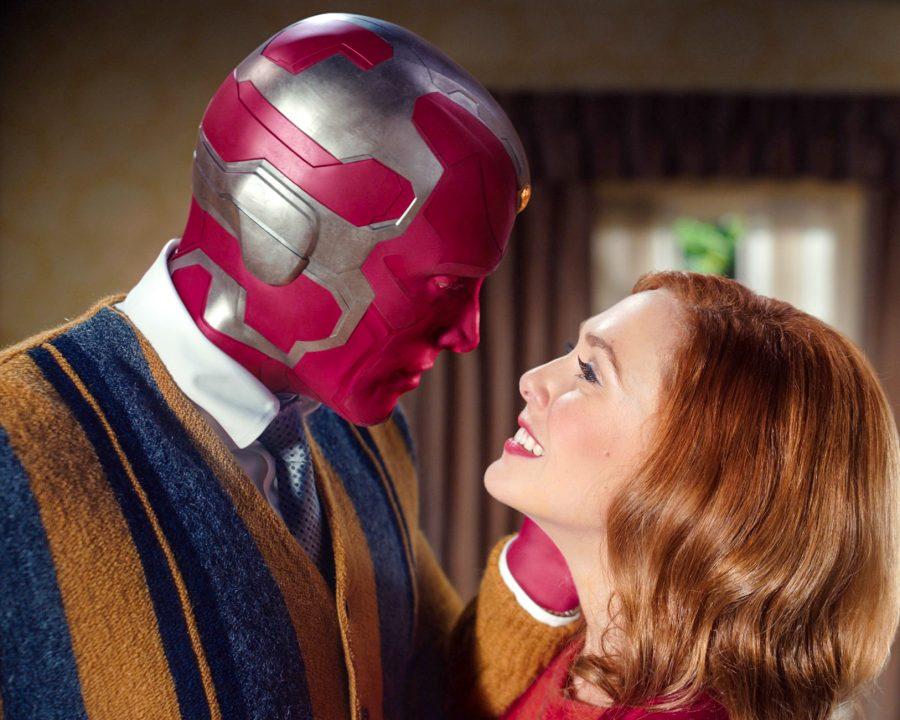With TV shows like Netflix’s ”Bridgerton” and Disney+’s ”WandaVision” gaining popularity, it can be hard to deny the steady rise in interest in TV shows and movies set in the past. Whether these shows and movies are dramatic period dramas with elaborate costumes and sets, or sitcoms and dramas with a vintage or nostalgic feel, the industry and the younger generations have definitely taken a liking to this genre.
In the last five to ten years, there has been a rise in TV shows and movies set in the past. The British television series ”Downton Abbey” seemed to jumpstart the American interest in period pieces. Since then, this genre has skyrocketed in popularity, with shows like ”Stranger Things” leading the pack for nostalgic television. In the past two years alone, Hollywood has seen box office hits and small screen staples such as Greta Gerwig’s ”Little Women,” “The Queen’s Gambit,” “Portrait of a Lady on Fire,” and ”American Horror Story: 1984.”
While shows and movies of this sort have always been popular—”Grease” was made in the 1970s, but set in the 1950s, and “That 70s Show” was produced from the late 1990s to early 2000s—this has been the peak for this genre of film. Especially now, amidst a pandemic, there may be multiple reasons for the rise in popularity.
The first—and most prevalent right now—would be a sense of escapism. No matter how difficult the characters’ lives seemed to be, they nearly always got some sort of happy ending, or the promise of one. Even the drama seems melodramatic, with the minor inconveniences seeming like the end of the world. These shows also tend to play up the glitz and glamour of the era the piece is about, in order to create an illusion of distraction. As Kat Eschner of Smithsonian Magazine writes, “Period dramas tend to focus on the aesthetics of the past rather than on its real hardships (although some of those are thrown in to keep the story moving).” In focusing on the good moments, viewers of these shows or movies have a feeling of longing towards the time periods, as well as wishing they could be in this time, if only for the clothes and music. This has been seen dozens of times with creators on TikTok ordering a corset with elaborate floral designs in order to live out their “Bridgerton” dreams, while fans of “WandaVision” have been recreating looks under the premise of ‘What I Would Wear in Westview’ throughout the decades of the show.
Vintage fashion has also seen a boost in popularity with the rise of social media, and these shows and movies definitely play a part in this growth. Whether it’s the tight dresses and wide leg pants of the ‘40s, the full skirts and sweaters of the ‘50s, the mini-skirts and bright patterns of the ‘60s, or the bell-bottom jeans and bohemian style clothes of the ‘70s, vintage fashion and film set in the past seem to go hand in hand.
“People view old shows and films and wish to imitate their favorite characters. New films and shows set in the past also heighten interests in retro looks,” said Al Woods of Flux Magazine.
Shows like “That 70s Show,” “The Queen’s Gambit,” “Stranger Things,” and Hollywood only feed into the desire many people in the younger generations may have to dress in a vintage style. Even traditional fashion trends have lent themselves towards a vintage feel, such as crew neck sweatshirts with turtlenecks underneath paired with mom jeans for an ‘80s or ‘90s feel, and flare jeans and curtain bangs for a nod towards the ‘70s. Characters like Jackie Burkhart, Beth Harmon, and Eleven have inspired younger generations to take risks with their style that they may have longed to do for a while but didn’t get to until these shows made the fashion trendy.
However, these shows and movies aren’t always as wonderful as they seem to be. Many of these shows and movies, especially the traditional “period” pieces, lack representation of people of color and LGBTQ+ people, and when they include representation, it can feel forced.
“They [historical media] treat inclusion as an item in a checklist to avoid being ‘canceled’ rather than being truly inclusive,” said UMass Boston sophomore Isabella Loboa.
For LGBTQ+ people and people of color, who flock to these pieces for the aesthetics and escapism more than the average person, the use of character of color and LGBTQ+ characters simply to fulfill necessary requirements to avoid backlash can feel like a slap in the face. Often times this can lead to more backlash, since the representation feels half-baked and disingenuous.
Though historical media has seen a peak in the current age, there is no doubt that this trajectory will continue in the coming years. As younger generations long for the “simpler” times of the past, Hollywood will take the opportunity given to them to create media to feed into this nostalgia. In the next twenty years we may even see shows and movies dedicated to reliving the “good ol’ days” of the ‘90s and early 2000s, and in fifty years, maybe even one dedicated to right now or the 2010s. Wherever historical media ends up, there will always be masses to consume it, and the supply and demand will likely never let up.





















































